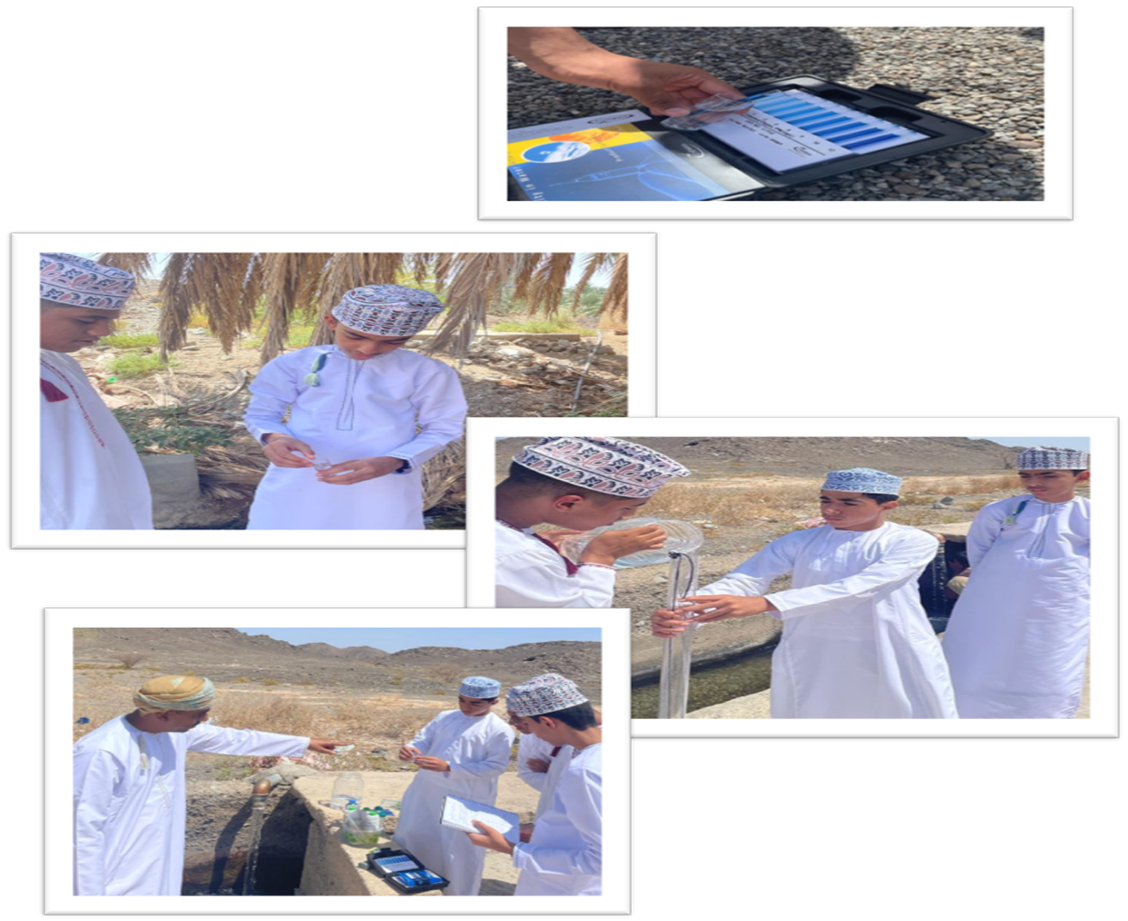Stars and STEM Stories
Comparing Fish in Oman's Falaj Misroun and Falaj Al Fulaij
Why do local aflaj around the Abdul Rahman bin Abi Bakr School for Basic Education for Boys contain differing numbers of catfish? Students Muhammad bin Nasser bin Hamad Al-Dawi and Hamoud bin Salem bin Hamoud Al Harithi do research to find out.
They first asked themselves questions:
- To what extent does the difference in air temperature affect the quantity of perch in the falajin?
- What is the relationship between algae and the percentage of dissolved oxygen in the water, which in turn affects the number of fish?
- To what extent are the numbers of walleyes affected by the characteristics of the water in the falajin?
- What is the relationship between water salinity and the number of fish in each of the two flags?
This research was done in the Wilayat of Ibra in the North Al Sharqiyah Governorate (Oman) with the aim of comparing the quantity of fish between Al-Fulaij and Misroun falaj. This helps the local community in providing the appropriate conditions for the presence of fish in its aflaj, which in turn contributes to the environmental balance.The students went to the Al-Falajin site and measured the air temperature using a digital temperature measuring device for the area surrounding Al-Falajin, applying The GLOBE Program's Atmosphere Protocol. The amount of algae in these two plants was also compared by taking photographs and noting the difference between them. The concentration of dissolved oxygen in them was measured by applying the Water Protocol. They also made a comparison between the transparency of Al-Falajin water using a transparency tube, and measured the degree of salinity for each of the two flags using a salinity measuring device in the laboratory.

The results indicated that the air temperature at Falaj Al-Fulaij is 40.4°C and at Falaj Misroun 40°C. They noted that the amount of algae in Falaj Misroun is higher than Falaj Al-Fulaij, and that the concentration of dissolved oxygen in Falaj Misroun (9.7) is higher than Falaj Al-Fulaij (7.4). The transparency of the water in the flask is equal (120°C). The salinity rate in the Falaj Falaj, 246 (dm/cm3), is much lower than the Falaj Masroun, which is 798 (dm/cm3).
The students saw that:
- Air temperature does not affect the numbers of freshwater fish in both falajin.
- The presence of algae affects the concentration of dissolved oxygen in the water, which in turn increases the number of perch in Falaj Masroun.
- The transparency of the water and the air temperature do not affect the presence of freshwater fish in the falajin.
- There is a significant impact of the low salinity of Falaj Misroun on the increase in the number of perch.
Based on the results of the research, the two students recommend conducting further research to identify the types of algae in Falaj Misroun and studying the possibility of cultivating them in Falaj Al-Falaj and other falaj. In addition, new methods were discovered to treat the salinity of Aflaj water because of its impact on preserving natural life and achieving environmental balance.
Images courtesy Ishaq Hamid Al Jabri, GLOBE Oman.





